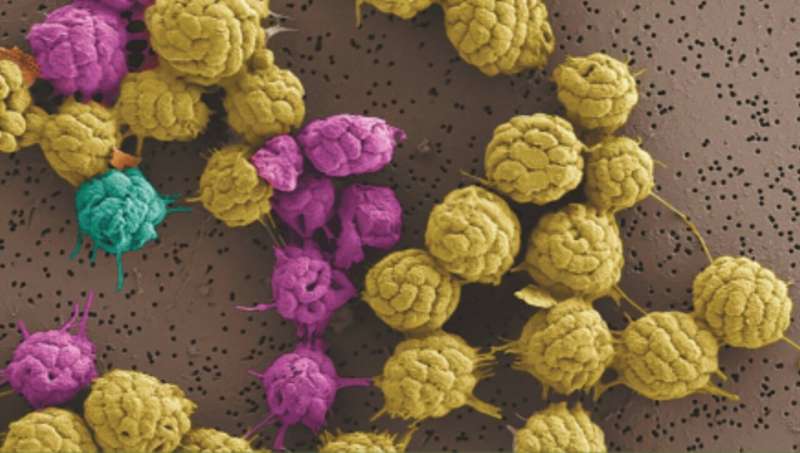In a recent study, researchers gained new insight into the lives of bacteria that survive by grouping together as if they were a multicellular organism. The organisms in the study are the only bacteria known to do this in this way, and studying them could help astrobiologists explain important steps in the evolution of life on Earth.
The work is published in the journal PLOS Biology.
The organisms in the study are known as multicellular magnetotactic bacteria (MMB). Being magnetotactic means that MMB are part of a select group of bacteria that orient their movement based on Earth’s magnetic field using tiny “compass needles” in their cells. As if that weren’t special enough, MMB also live bunched up in collections of cells that are considered by some scientists to exhibit “obligate” multicellularity, the trait on which the new study is focused.
In biology, obligate means that an organism requires something for survival. In this case, it means that single cells of MMB cannot survive on their own. Instead, cells live as a consortium of multiple cells that behave in many ways like a single multicellular organism. This requirement to live together means that when MMB reproduce, they do so by replicating all the cells in the consortium at once, doubling the total number of cells. This large group of cells then splits into two identical consortia.

MMB are the only example of bacteria that are known to live like this. Many other bacteria clump together as simple aggregates of single cells. For instance, cyanobacteria clump together in colonies and form structures like stromatolites or biofilms that are visible to the naked eye. However, unlike MMB, these cyanobacteria can also survive as single, individual cells.
In the new study, scientists have revealed even more complexity in the relationships between MMB cells. First, contrary to long-held assumptions, individual cells within MMB consortia are not genetically identical, they differ slightly in their genetic blueprint. Further, cells within a consortium exhibit different and complementary behavior in terms of their metabolism.

Each cell in an MMB consortium has a role that contributes to the survival of the entire group. This behavior is similar to how individual cells within multicellular organisms behave. For example, human bodies are made up of tens of trillions of cells. These cells differentiate into specific cell types with different functions. Bone cells are not the same as blood cells. Fat cells that store energy are different from the nerve cells that store and transmit information. Each cell has a role to play, and together they make up a single living body.
The evolution of multicellularity is one of the major transitions in the history life on our planet and had profound effects on Earth’s biosphere. In the wake of its appearance, life developed novel strategies for survival that led to entirely new ecosystems. As the only example of bacteria that exhibit obligate multicellularity, MMB provide an important example of possible mechanisms behind this profound step in life’s evolutionary history on Earth.
More information:
George A. Schaible et al, Multicellular magnetotactic bacteria are genetically heterogeneous consortia with metabolically differentiated cells, PLOS Biology (2024). DOI: 10.1371/journal.pbio.3002638
Citation:
Unique bacteria that survive by employing multicellular behavior offer clues to life’s evolution (2025, April 2)
retrieved 2 April 2025
from https://phys.org/news/2025-04-unique-bacteria-survive-employing-multicellular.html
This document is subject to copyright. Apart from any fair dealing for the purpose of private study or research, no
part may be reproduced without the written permission. The content is provided for information purposes only.

